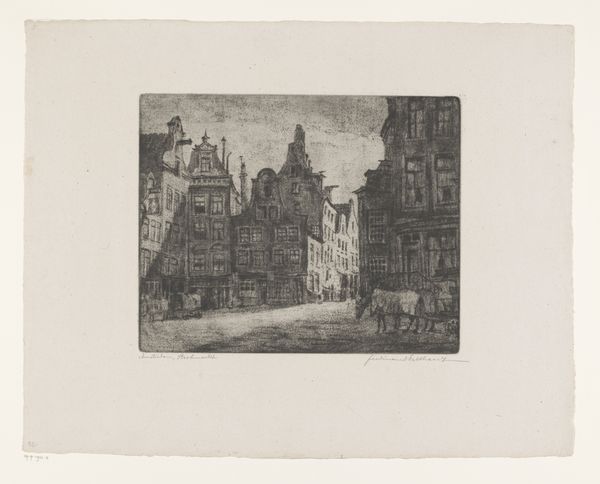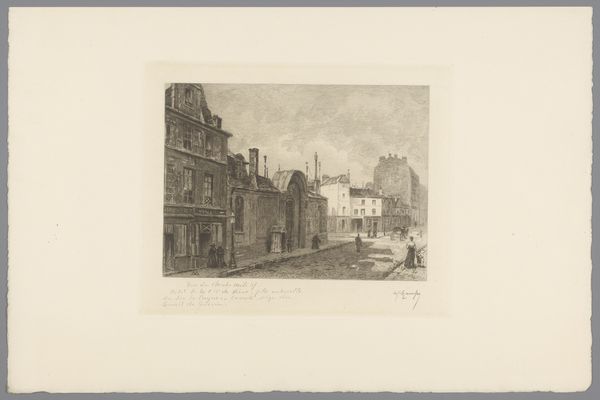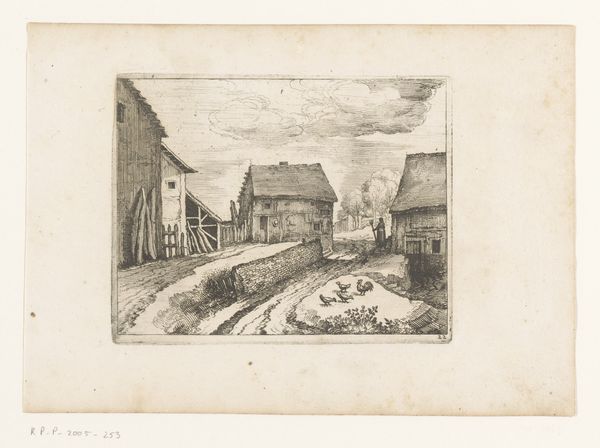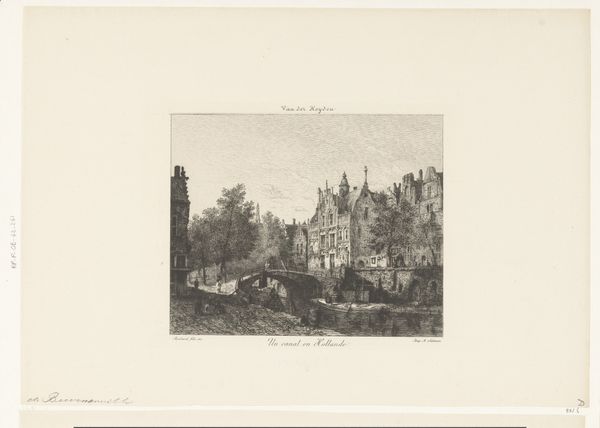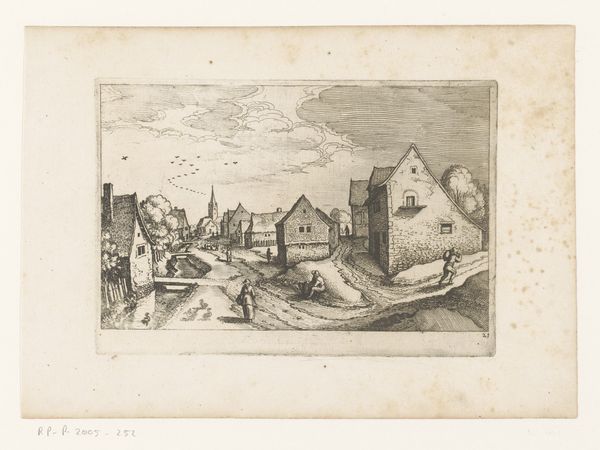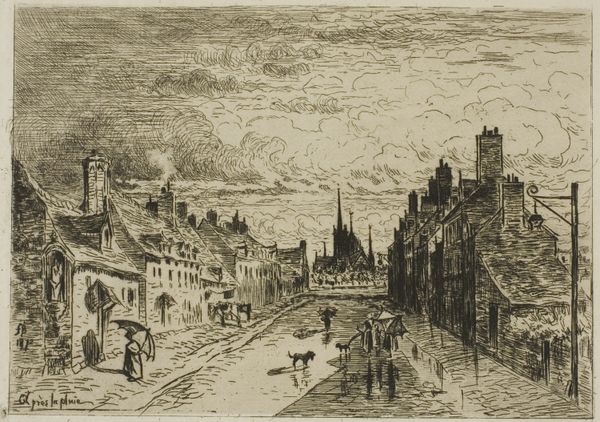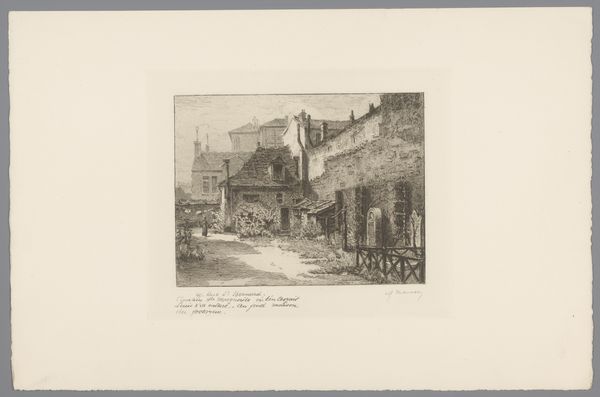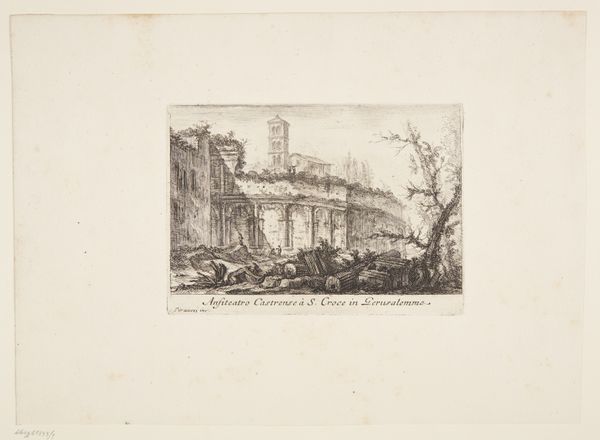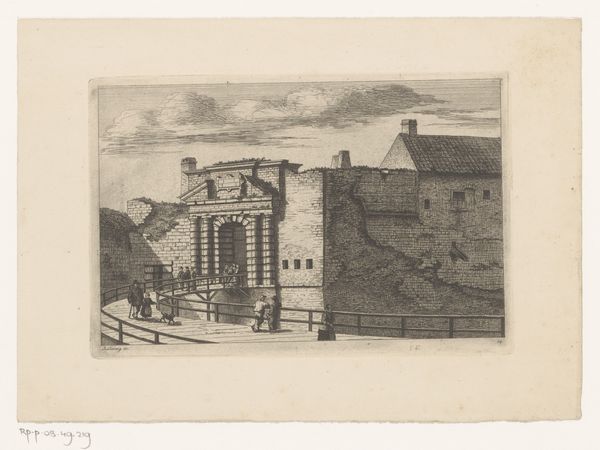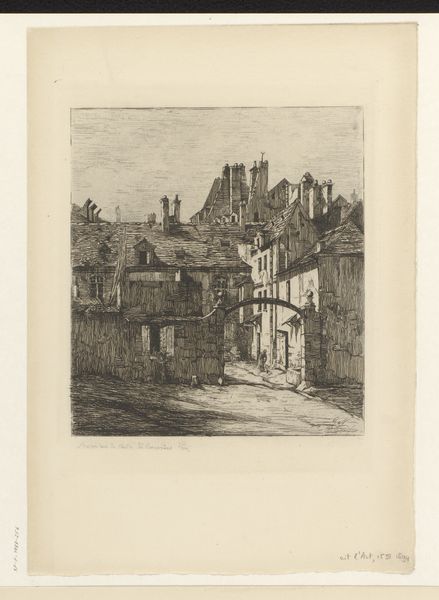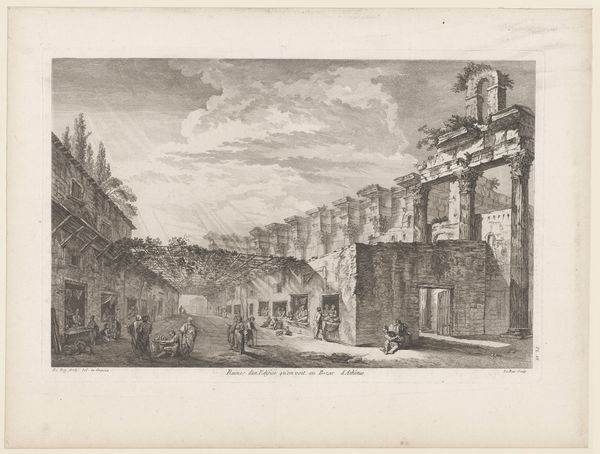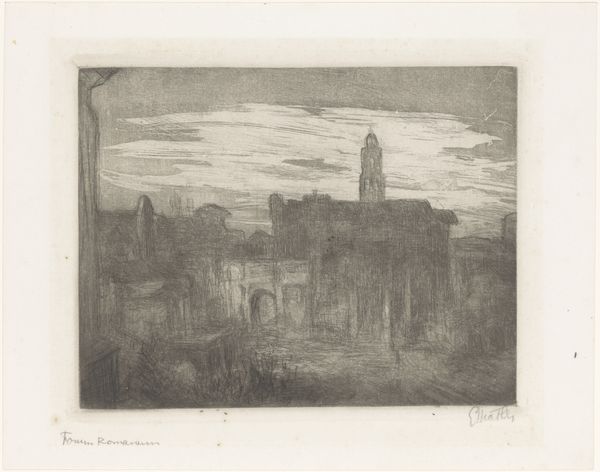
print, etching
# print
#
impressionism
#
etching
#
cityscape
#
realism
Dimensions: height 117 mm, width 158 mm
Copyright: Rijks Museum: Open Domain
Curator: Welcome. We are standing before Félix Hilaire Buhot's, Stadsgezicht met een natte straat, or Cityscape with a wet street, made around 1872. The work is an etching. Editor: My initial impression is the dynamism. Look at how the reflections on the wet street lead our eye into the receding depth of the cityscape. The tones are also intriguing; the overall somber palette evokes a melancholic mood. Curator: Indeed. The city, rendered in etching, captures a moment in time, hinting at the socio-economic conditions of the working class. Note how Buhot subtly hints at figures huddling under umbrellas – perhaps emphasizing resilience in the face of adversity. There's also the looming architecture pressing down upon them, indicative of societal constraints. Editor: The atmospheric perspective is well handled here, using the tonality to push the background further and further away. We see an impressive use of line and shading here. Observe how he varies the etching strokes to depict texture, the cobblestones contrasted by the blurred sky above. Curator: It prompts us to question what this city represented in the context of a rapidly industrializing France, wouldn’t you agree? One can draw on feminist theory here – how might this depiction mirror the gendered experience of navigating urban spaces? This period saw increasing numbers of women entering the workforce and the public sphere; Buhot gives us only the briefest of glances. Editor: That's a valid reading. Structurally, the composition uses a clear one-point perspective. The lines of the buildings and street converge to create a central vanishing point, grounding the spatial structure of the etching, which, with an almost uncanny effect, renders depth, as I said. It emphasizes rationality through rigorous geometrical perspective. Curator: This image offers insights into 19th-century urban life, as well as commentary on the era's social fabric and emerging urban identities. We could certainly link it to broader discussions surrounding labor rights and class divisions reflected in visual culture. Editor: And the contrast is, again, superb; light versus dark emphasizes both the tonal qualities but also structural components of what’s visible and hidden. Curator: It allows for us to contextualize how even the representation of weather can have broader social implications! Editor: From my side, I appreciate the formal mastery Buhot exhibits in controlling light, line and composition. Curator: I find the ways it provokes critical engagement with its socio-political milieu much more enriching.
Comments
No comments
Be the first to comment and join the conversation on the ultimate creative platform.
